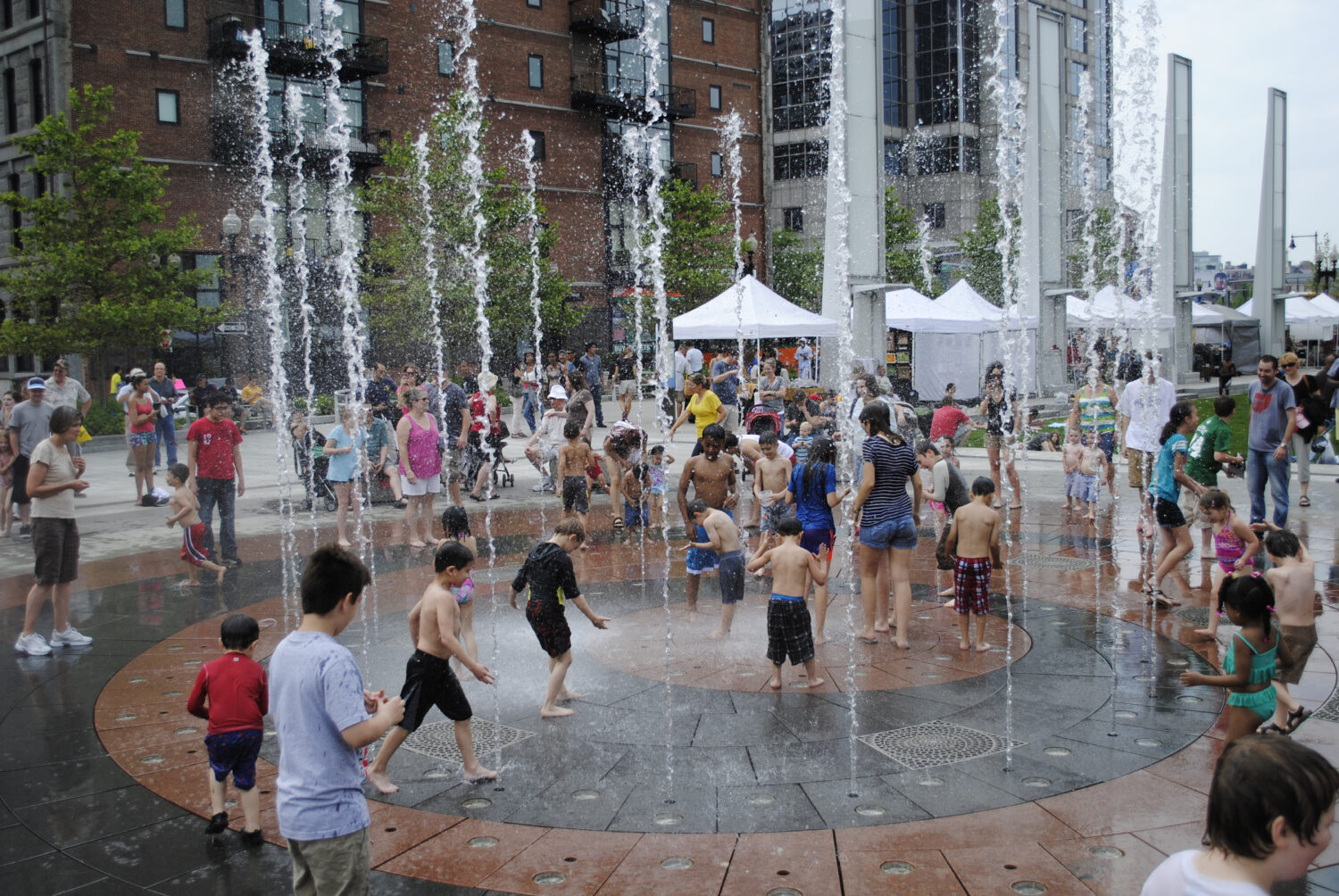In June, thanks to the Heinrich Böll Foundation, I had the chance to join a study tour to Denmark and Germany with staff from several US-based foundations that, like Barr, are working to accelerate our transition to a clean energy economy. Our first stop was Copenhagen.
In many ways, Copenhagen reminded me of Boston. It is a waterfront city with old buildings and meandering streets. But it is also experiencing a boom in new, waterfront real estate (much like Boston’s Seaport Innovation District).
When it comes to climate plans, Copenhagen leads the pack on ambition. In fall 2012, Copenhagen rolled out a plan to become the world’s first “carbon neutral” capital by 2025. It had a solid foundation to build on, having reduced its emissions by 21 percent between 2005 and 2011.
How did the Danes do it? Here are a few things I learned…
The Bike is King
The Copenhagen cityscape is full of bicycles and bicyclists of every age and type: women in dresses and heels, men in suits, old couples in matching tracksuits, parents towing kids in cargo bikes, and shoppers carting groceries. At one point, I even saw a whole wedding party cycle by. Copenhagen city planners have made access for bicycles in public spaces a priority. It has a well-designed network of “cycle tracks,” which are bikeways separated and protected from traffic by physical barriers, like curbs – as opposed to bike lanes common in US cities that are demarcated only by a line of paint on pavement. Cycle tracks have their own traffic lights and often turn green first. What about snow in winter? No problem. City policy mandates that snow be removed from cycle tracks before car lanes. As the quickest, easiest, cheapest, and (we tried it ourselves, so I can say firsthand) fun way to get around town, it is not surprising that biking is the preferred mode of transportation in Copenhagen. 52% of all Copenhageners cycle to work or school every day. In fact, more people commute by bicycle in greater Copenhagen than in the entire United States. To entice suburban commuters to hop on their bikes, Copenhagen is partnering with neighboring cities to build what they call cycle superhighways. These are wider, contiguously linked tracks with amenities like bike pumps. The first one was completed in 2012. With strategies like these, by 2025, Copenhagen expects 75 percent of trips to be made by foot, bike, or public transit.

All in with wind
Bikes are not the only ubiquitous feature in Copenhagen. So are wind turbines a few miles offshore. The turbines closest to the city are part of the Middelgrunden wind farm – 20 turbines with a capacity of 40 Megawatts which covers 3% of the energy in Copenhagen. This wind farm is cooperatively owned by the municipal utility company and 8,500 community members, who share in the profits – a structure that greatly facilitated public support for wind energy.
Denmark’s embrace of wind energy was influenced by the oil crisis in the 1970s and Chernobyl in 1986. Determined to wean off fossil fuels, and recognizing the business opportunity of wind energy, Denmark launched a major transformation from fossil fuels to renewable energy sources. Along the way, it became a pioneer in commercial wind power. Today, wind power makes up approximately 30% of Denmark’s electric sector and almost half of all wind turbines around the world are produced by Danish manufacturers, such as Vestas and Siemens. Copenhagen plans to build 100 more wind turbines by 2025. This is a major component of its decarbonization strategy.
Keeping it Warm and Cool Together (and while we’re at it, skiing)
Less visible but just as important for emissions reduction is Copenhagen’s subterranean district heating system, which distributes heat through a pipe system to 98% of buildings in the city. The heat is generated by regional refuse incineration plants and combined heat and power plants. District energy is more efficient than decentralized, individual heating systems. City officials recognize that the current system is due for an upgrade to reduce pollutants and allow for renewable sources. A new plant is also under construction (and will – believe it or not – double as a ski slope).
Under the climate plan, district heating is to be carbon neutral by 2025. To complement district heating, there is also a state-of-the-art district cooling system, where waters from the city harbor are deployed to cool commercial buildings and data centers.
Carbon-negative (!!!) new developments, walkability, and multi-modal growth
Copenhagen is anticipating adding 100,000 new residents by 2025 while at the same time going carbon neutral. One piece of how this is possible is a new neighborhood on the waterfront, called Nordhavnen, which will accommodate 40,000 inhabitants and 40,000 workplaces, with the goal of making it a carbon-negative city district. This means the district will produce more energy than it consumes.
City planners are also applying the “Five minute city”- principle, ensuring that every point of the district can be reached within a five minute walk from a metro station. Moreover, bicycle riding will be promoted by high-speed direct lanes and with the patchwork of connecting canals, residents may also get around by small boat, canoe and kayak.
Copenhagen was an eye-opening and inspiring beginning to our trip.
Stay tuned for reflections on our next stop – Germany, where we got a firsthand look at the “Energiewende” (Germany’s “Energy Transition”).




